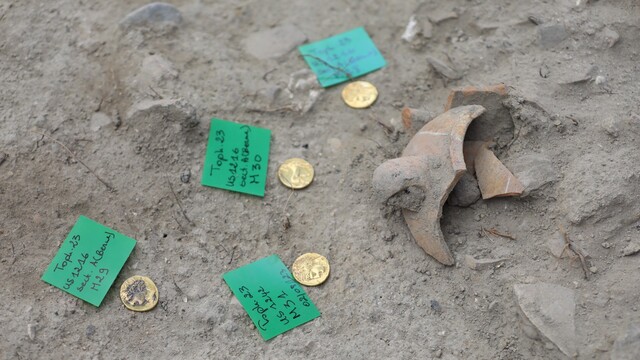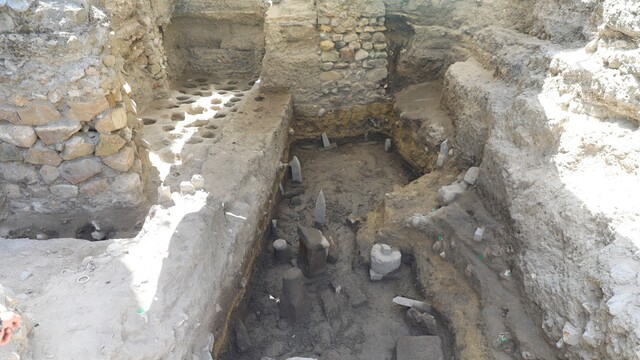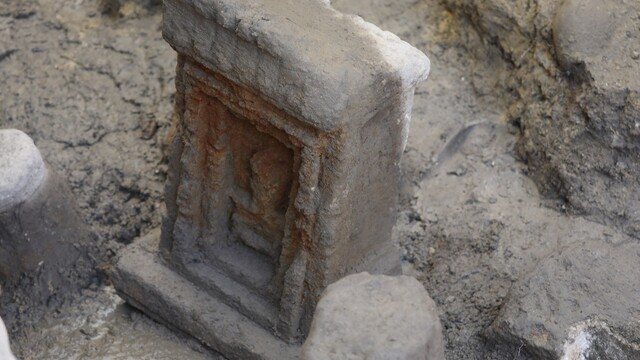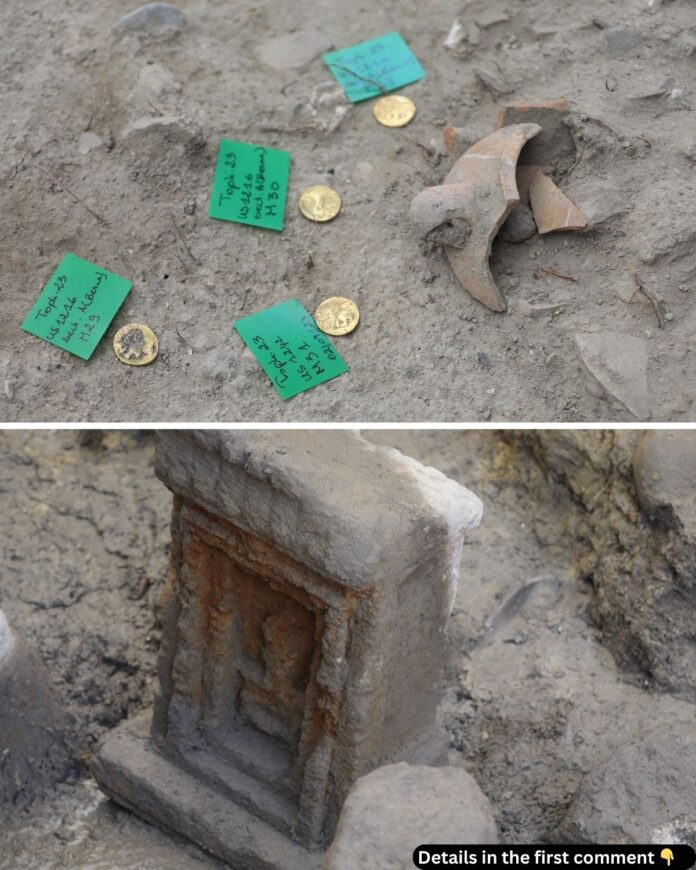Archaeologists in Tunisia have uncovered a trove of remarkable artifacts near the ruins of the ancient city of Carthage, including five rare gold coins, urns with cremated remains of infants, and animal bones. These discoveries, made near the Temple of Tafat El Bony, have sparked renewed interest in Carthaginian religious practices and their controversial history. The findings not only highlight the wealth and religious fervor of Carthage but also reignite the debate over whether child sacrifice was part of their cultural rituals.
The Discovery: Gold Coins and Sacred Burials
The excavation, conducted near the hilltop temple on the outskirts of Tunis, revealed gold coins that date back over 2,300 years. The coins bear the image of Tanit, the Carthaginian goddess of fertility and motherhood, and were likely left as offerings by wealthy citizens. Found alongside the coins were urns containing cremated remains of animals, infants, and premature babies. These burials were located within what researchers believe was a sacred area dedicated to the deities Baal Hammon and Tanit.

The temple site holds significant historical value as it provides a glimpse into the religious customs of ancient Carthage, a city once at the heart of Mediterranean trade and cultural exchange. The gold coins, measuring just under an inch in diameter, underscore the affluence and devotion of Carthaginian society.

The Historical Context of Carthage
Carthage, founded by the Phoenicians in the 9th century BCE, grew into a powerful city-state that dominated Mediterranean trade. By the 6th century BCE, it had become a thriving metropolis with influence extending across North Africa, Sicily, and Spain. However, its rivalry with Rome culminated in the Punic Wars, which ultimately led to the city’s destruction in 146 BCE.
Following its defeat, Rome rebuilt Carthage as a Roman colony, leaving behind a layered archaeological landscape that includes remnants of both the Carthaginian and Roman civilizations. Today, the site is recognized as a UNESCO World Heritage Site, preserving its legacy for future generations.
Tanit and Baal Hammon: The Deities of Carthage
Central to Carthaginian religious practices were the deities Tanit and Baal Hammon. Tanit, often depicted with symbols of fertility and protection, was revered as a guardian of mothers and children. Baal Hammon, on the other hand, was associated with agriculture, weather, and prosperity.
The Temple of Tafat El Bony, where the recent discoveries were made, is believed to have been a focal point for worship and offerings to these deities. The gold coins featuring Tanit suggest the significance of these religious practices, as devotees sought the favor of the gods through material offerings.
Video
An ancient treasure has been found in Gadwal, India – watch the video to explore this remarkable discovery and its historical significance!
Infant Burials and the Debate on Sacrifice
Perhaps the most contentious aspect of the findings is the cremated remains of infants found in urns. While some scholars argue that these burials were evidence of child sacrifice, others contend that the remains belong to infants who died of natural causes. This debate has raged for decades, fueled by a combination of historical texts and archaeological evidence.
Classical accounts, including passages in the Bible and writings by Greek and Roman authors, describe child sacrifice as a common practice in Carthage. These sources claim that Carthaginians offered their children to Baal Hammon in times of crisis or as an act of profound devotion. However, critics argue that these accounts were part of Roman propaganda aimed at vilifying their rivals.

Archaeological evidence offers some support for both sides of the debate. Many urns contain cremated remains, a practice that would have required significant resources, suggesting a ritualistic purpose. Patricia Smith, a biological anthropologist, points out that the use of wood for cremation would have been costly, indicating that such efforts were likely reserved for sacrificial rituals.
Significance of the Gold Coins
The gold coins discovered at the site not only reflect the wealth of Carthaginian society but also provide insight into their religious practices. The intricate craftsmanship of these coins underscores the sophistication of Carthaginian artisans and their connections to other Mediterranean cultures.
The depiction of Tanit on the coins highlights her importance as a central figure in Carthaginian spirituality. These offerings suggest that worshippers believed material wealth could curry favor with the gods, ensuring prosperity and protection for their families and community.
Controversial Legacy of Carthaginian Rituals
The findings at the Temple of Tafat El Bony add to the complex narrative of Carthage’s religious practices. While the gold coins and infant burials provide evidence of devotion, they also fuel the long-standing debate over whether Carthaginians practiced child sacrifice.
Modern scholars remain divided on this issue. Some argue that the prevalence of cremated remains and the descriptions in ancient texts point to a sacrificial tradition. Others, however, believe that these were simply burial practices for infants who died naturally, citing the lack of definitive proof for ritual killings.
The legacy of Carthage continues to captivate historians and archaeologists, offering a window into the interplay between faith, culture, and politics in the ancient Mediterranean world.
Implications of the Discovery
The recent discoveries provide valuable insights into the cultural and religious practices of ancient Carthage. They highlight the city’s wealth, its devotion to the gods, and the intricate craftsmanship of its artisans.
Moreover, these findings underscore the importance of preserving and studying archaeological sites like Carthage. As researchers continue to unearth artifacts and analyze their significance, they contribute to a deeper understanding of human history and the complexities of ancient civilizations.
Conclusion
The discovery of gold coins and cremated remains near the Temple of Tafat El Bony offers a fascinating glimpse into the spiritual and cultural life of ancient Carthage. While the debate over child sacrifice remains unresolved, the findings affirm the city’s historical importance and the enduring mystery of its religious practices.
As archaeologists continue their work, each new discovery brings us closer to understanding the rich and complex legacy of Carthage, a city that once stood at the crossroads of the ancient world.
